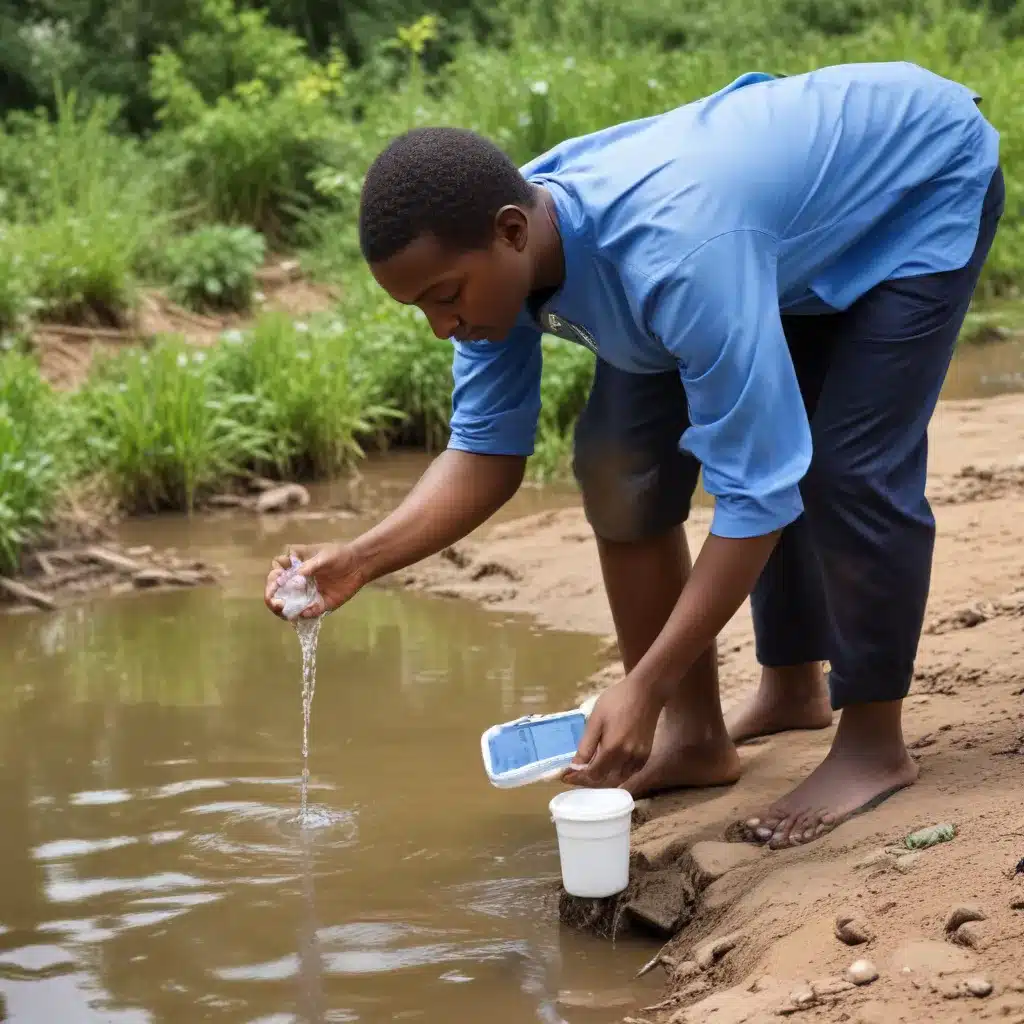
Introduction to the Power of Mobile Technologies in Water Monitoring
The water and sanitation sector is undergoing a transformative shift, with the integration of innovative mobile technologies emerging as a game-changer in crisis response and community resilience efforts. As seasoned experts in this field, we recognize the immense potential of harnessing the power of mobile devices and real-time data to transform how we monitor, manage, and advocate for safe water access, particularly in times of emergency and humanitarian crises.
Bridging the Gap Through Mobile Connectivity
Traditionally, water quality monitoring has relied on centralized, lab-based approaches that are often slow, resource-intensive, and disconnected from the realities on the ground. However, the proliferation of smartphones, low-cost sensors, and cloud-based platforms has opened up new frontiers in community-driven, real-time water quality monitoring. By leveraging these mobile technologies, we can now bridge the gap between water data and action, empowering local stakeholders to detect, respond to, and prevent water-borne crises with unprecedented speed and accuracy.
Practical Applications of Mobile Water Quality Monitoring
Rapid Response to Emergencies
In times of crisis, such as natural disasters or disease outbreaks, access to clean water can be severely compromised, leading to devastating health consequences. Mobile-enabled water quality monitoring systems can provide critical early-warning capabilities, enabling rapid deployment of resources and targeted interventions. By equipping community members with simple, handheld devices that can test for key water quality parameters, we can identify contamination hotspots in real-time and trigger immediate response efforts.
Case Study: Combating Cholera Outbreaks with Mobile Monitoring
In the aftermath of a devastating hurricane, a local NGO in the Caribbean worked with community volunteers to deploy a network of mobile water quality testing stations. Using low-cost, smartphone-compatible sensors, they were able to map water contamination levels across the affected region within 48 hours, allowing public health authorities to swiftly initiate chlorination and distribution of safe drinking water to the most vulnerable populations. This rapid response helped contain the spread of a cholera outbreak and saved countless lives.
Empowering Community Advocacy
Mobile technologies not only enhance our ability to monitor water quality but also empower local communities to become active advocates for their own water security. By equipping residents with user-friendly apps and tools, we can facilitate grassroots data collection, visualization, and sharing – enabling community members to identify, document, and demand solutions to persistent water challenges.
Case Study: Amplifying Community Voices through Mobile Monitoring
In a peri-urban settlement in sub-Saharan Africa, a community-based organization worked with residents to establish a network of mobile water quality monitoring stations. Using a simple app, community members could easily test their water sources, upload the results, and overlay the data onto a digital map of the neighborhood. This empowered the residents to collectively advocate for infrastructure upgrades and hold local authorities accountable, leading to the rehabilitation of several contaminated wells and the installation of new water kiosks.
Enhancing Operational Efficiency
In addition to crisis response and community empowerment, mobile water quality monitoring also offers significant advantages in terms of operational efficiency and cost-effectiveness. By automating data collection, storage, and analysis, these systems can reduce the time and resources required for traditional monitoring approaches, allowing water service providers to optimize their operations and better target investments.
Case Study: Optimizing Water Distribution through Mobile Monitoring
A municipal water utility in Southeast Asia deployed a network of mobile water quality sensors across its distribution system. The real-time data from these sensors, transmitted via cellular networks, allowed the utility to quickly identify leaks, pinpoint water quality issues, and adjust chlorination levels accordingly. This resulted in significant cost savings, reduced wastage, and improved water service reliability for the utility’s customers.
Overcoming Challenges and Barriers
Despite the numerous benefits of mobile water quality monitoring, several challenges and barriers must be addressed to ensure successful, long-term implementation. Key considerations include:
Data Integrity and Reliability
Ensuring the accuracy and reliability of data collected through mobile platforms is crucial. Rigorous calibration, quality control, and validation protocols must be established to build trust and credibility in the monitoring results.
Data Accessibility and Governance
Navigating data ownership, privacy, and sharing protocols is essential to fostering transparency and inclusive decision-making. Collaborative governance frameworks that engage all stakeholders, from community members to local authorities, are critical.
Technological Limitations and Connectivity
In remote or resource-constrained settings, the availability and reliability of communication networks, power supply, and mobile device compatibility can pose significant challenges. Innovative, off-grid solutions and capacity-building efforts are necessary to overcome these barriers.
Sustainability and Scalability
Sustaining mobile water quality monitoring initiatives over the long term requires careful planning, capacity development, and the integration of these technologies into existing water management systems. Scalability considerations, such as affordability, user-friendliness, and institutional buy-in, must also be addressed.
The Way Forward: Leveraging Partnerships and Collaboration
To harness the full potential of mobile water quality monitoring, a collaborative, multi-stakeholder approach is essential. By forging partnerships between community organizations, water service providers, academic institutions, and technology companies, we can leverage diverse expertise, resources, and perspectives to drive innovation and scale.
The Joint Action for Water Approach
The Joint Action for Water (JAW) platform is dedicated to fostering such collaborative efforts, bringing together a global network of water and sanitation practitioners, community leaders, and technology innovators. Through JAW, we can share best practices, co-create solutions, and advocate for policies that empower communities to take charge of their water security using mobile technologies.
By harnessing the power of mobile connectivity, we can revolutionize the way we monitor, manage, and advocate for water quality, particularly in times of crisis. Through real-time data, community empowerment, and collaborative partnerships, we can build more resilient, equitable, and sustainable water systems that serve the needs of all. The future of water quality monitoring is mobile, and the time to act is now.

